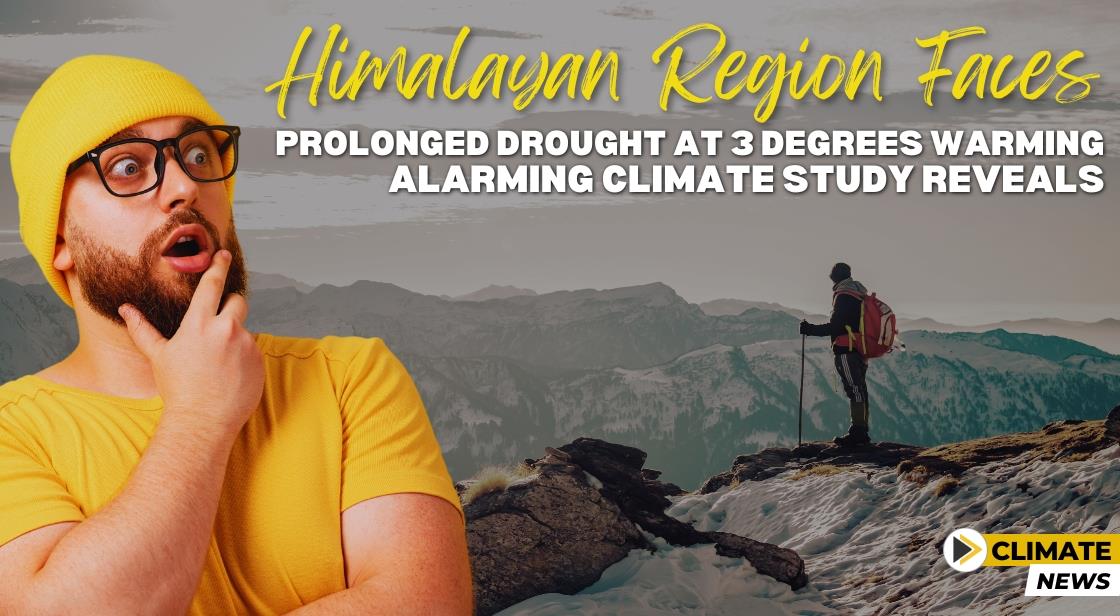Himalayan Region Faces Prolonged Drought at 3 Degrees Warming, Alarming Climate Study Reveals

News Synopsis
New research indicates that if global warming reaches 3 degrees Celsius, approximately 90% of the Himalayan Region will be gripped by a year-long drought. Published in the journal Climatic Change, the study led by the University of East Anglia (UEA) reveals the escalating risks of drought, heat stress, and biodiversity loss with each additional degree of global warming.
Climate Risks Amplified at 3 Degrees Warming:
The collection of eight studies, focusing on countries including India, Brazil, China, Egypt, Ethiopia, and Ghana, underscores the heightened risks associated with rising temperatures. The Himalayan Region, in particular, is projected to face severe and extended droughts under a 3 degrees Celsius warming scenario.
Avoiding Catastrophe: The Importance of Limiting Warming
The study emphasizes the crucial role of adhering to the Paris Agreement's temperature goals. By limiting global warming to 1.5 degrees Celsius compared to 3 degrees Celsius, the research suggests:
-
India:
-
80% reduction in increased human exposure to heat stress.
-
Half the country could act as a refuge for biodiversity.
-
21% reduction in the increase of agricultural land exposed to drought.
-
-
Globally:
-
Reduced economic damages from both fluvial flooding and sea-level rise.
-
20-80% lower increases in human exposure to severe drought across the six studied countries.
-
These findings underscore the urgency of taking action to mitigate climate change.
Impact on India's Heat Stress and Biodiversity:
The research emphasizes that adhering to the Paris Agreement's temperature goals, limiting global warming to 1.5 degrees Celsius, could mitigate approximately 80% of the increased human exposure to heat stress in India. Additionally, pollination in India is projected to reduce by half at 3-4 degrees warming compared to a quarter reduction at 1.5 degrees.
Biodiversity and Agricultural Land Preservation:
Limiting warming to 1.5 degrees Celsius is crucial for biodiversity preservation. The University of East Anglia's study indicates that under a 1.5 degrees scenario, half of India can act as a refuge for biodiversity, contrasting with a mere 6% under 3 degrees warming. Furthermore, agricultural land's exposure to severe droughts of over a year would decrease by 21% to 61% across the studied countries with 1.5 degrees warming.
Economic Damages and Sea-Level Rise:
Economic damages due to fluvial flooding and sea-level rise are anticipated to increase more slowly if warming is limited to 1.5 degrees Celsius. The researchers stress the necessity of reducing global warming, cautioning that current global policies may lead to a 3 degrees Celsius increase.
Global Warming Mitigation and Adaptation Emphasized:
The study advocates for concerted efforts to reduce global warming, emphasizing both mitigation and adaptation strategies. The need for expanding protected area networks to enhance climate-resilient biodiversity conservation is highlighted. Restoration of ecosystems, particularly if warming is contained at 2 degrees Celsius or less, is proposed as a means to combat climate change effects and restore natural capital.
You May Like









